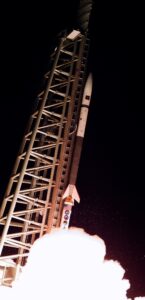
The Naval Surface Warfare Center Dahlgren Division (NSWCDD) in Maryland says that it set a world record last month when the division fired a conical projectile--"hypercone"--109 nautical miles at White Sands Missile Range, N.M. Last October, NSWCDD said that it had tested hypercone for the first time to collect relevant aerodynamic and aerothermal data for hypersonic flight conditions. "We recently flew that [hypercone] prototype at White Sands Missile Range, fired it out of an electromagnetic gun out to 109 nautical miles--two…














